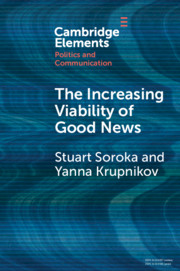Element contents
The Increasing Viability of Good News
Published online by Cambridge University Press: 15 June 2021
Summary
- Type
- Element
- Information
- Online ISBN: 9781108982375Publisher: Cambridge University PressPrint publication: 12 August 2021
Bibliography
- 8
- Cited by



